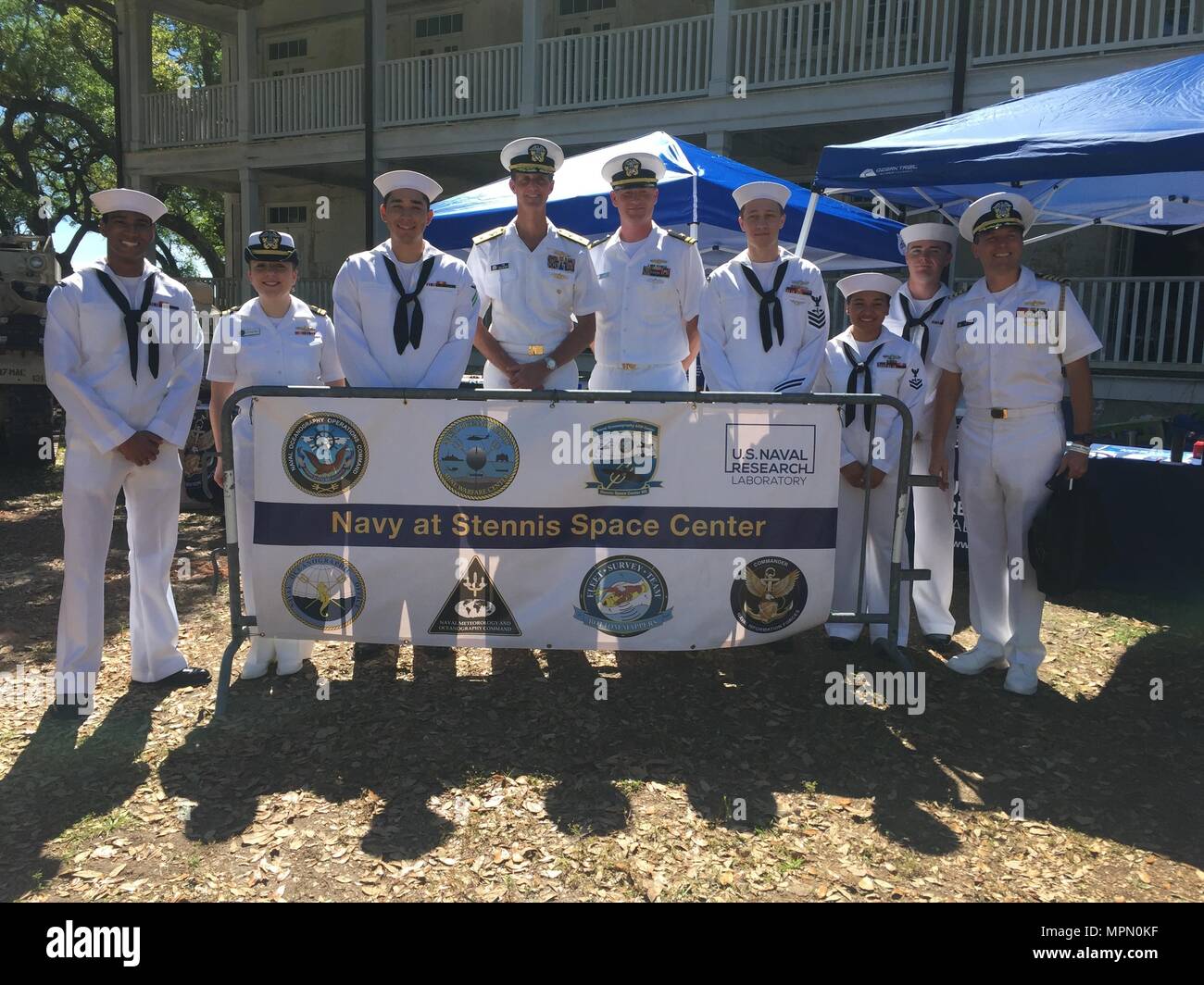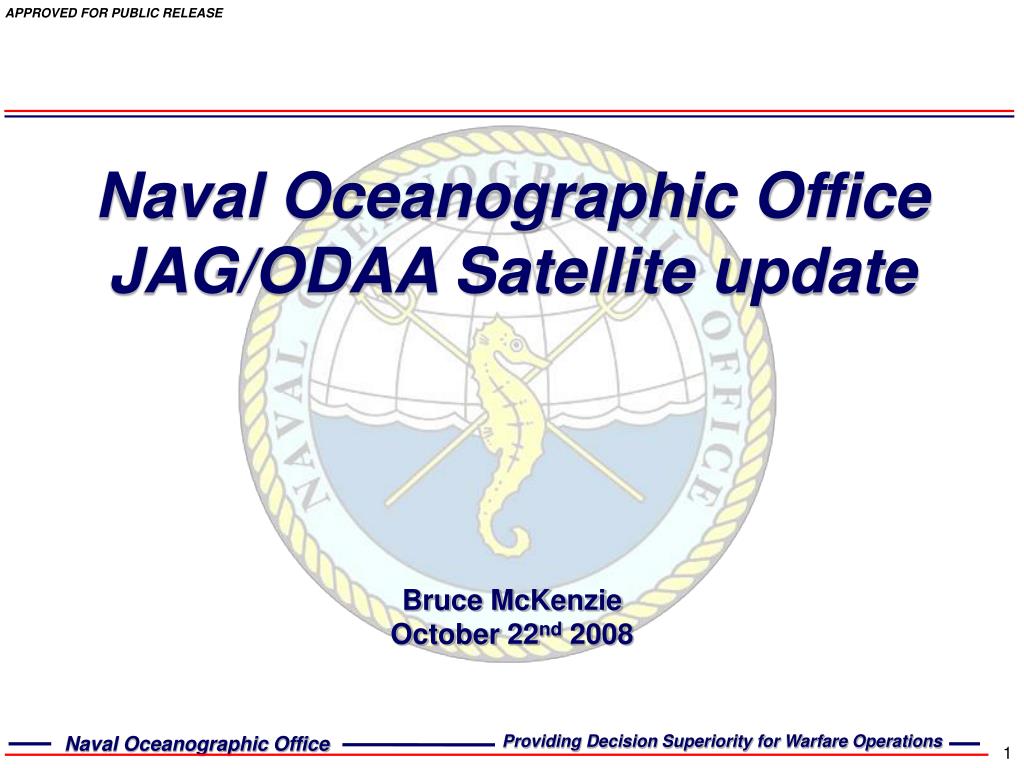Naval Oceanographic Office - This article has several problems. Please help improve it or discuss these issues on the talk page. (Learn how and what to remove these message templates)
This article relies heavily on primary source references. Improve this article by adding secondary or tertiary sources. Find sources: "Naval Meteorological and Oceanographic Command" – news · newspapers · books · scholar · JSTOR (September 2011) (Learn more about how and why this message template was removed)
Naval Oceanographic Office

This article contains content that is written as an advertisement. Help improve it by removing promotional content and inappropriate external links and adding encyclopedic content from a neutral perspective. (September 2011) (Learn how and why to remove this message template)
Naval Meteorology And Oceanography
This article relies heavily or tirelessly on a single source. Related discussions can be found on the talk page. Please help improve this article by providing citations to additional sources. Find sources: "Naval Meteorological and Oceanographic Command" - news · newspapers · books · scholar · JSTOR (December 2020)
The factual accuracy of this article is debatable. Related discussions can be found on the talk page. Help ensure that disputed statements are from a reliable source. (April 2021) (Learn how and why to remove this message template)
The Naval Oceanography and Meteorology Command (COMNAVMETOCCOM), or CNMOC, serves as the operational arm of the Naval Oceanography Program. Based at Stnis Space Cter in Mississippi, CNMOC is a tri-echelon command under United States Fleet Forces Command (USFLTFORCOM). Courtesy of CNMOC
Is globally distributed, with assets on larger ships (aircraft carriers, amphibious ships, and command and control vessels), land-based facilities in shrinking fleet areas, and large manufacturing sites in the US.
American Connections Media Outreach: Binghamton Native Serves With Navy's Weather Command Headquarters At Stennis Space Center
CNMOC focuses on providing critical environmental expertise for anti-submarine warfare, naval special warfare, mine warfare, intelligence, surveillance and reconnaissance, and fleet operations (strike and expeditionary), as well as maritime support areas. Operations, aviation operations, navigation, accurate weather and astrometry.
The Naval Oceanographer works closely with CNMOC staff to ensure that appropriate resources are available to accomplish their mission, to act as a liaison between CNMOC and the Chief of Naval Operations, and to support the Naval Oceanography Program in interactive forums and international. .
Responsible for the command and management of the Naval Oceanography Program, using meteorology and oceanography, GI&S and precision weather and astrometry, to exploit the environment to successfully use the strategic, tactical and operational battlespace throughout the campaign continuum and in all levels of war. – strategic, operational and tactical.
/cloudfront-us-east-1.images.arcpublishing.com/gray/UPMPLSDNORDLJMW26Z4NCDFZWI.jpg)
The Naval Meteorological and Oceanographic Command traces its origins to the Chart and Instrument Depositories, a repository of 19th-century nautical charts and navigational equipment. In the 1840s, its supervisor, Lieutenant Matthew Fontaine Maury, created and published a revolutionary series of wind maps and ocean currents. This information, still used in modern computer models of the ocean basins and atmosphere, laid the foundations for the sciences of oceanography and meteorology.
File:us Navy 100917 N 1038b 003 Naval Oceanographic Office Surveyors John Suslavage And David Small Prepare To Launch Autonomous Underwater Vehicle, Rem.jpg
Atmospheric science was further developed with the birth of naval aviation in the early 20th century. During World War I and the decades that followed, naval aerologists applied the new concepts of air masses and war fronts and provided predictions for the first transatlantic flight.
The Navy's meteorological and oceanographic programs contributed greatly to the Allied victory in World War II. In the Pacific, Navy meteorologists break the Japanese weather code. Hydrographic survey ships, often under enemy fire, gathered data along foreign coasts to create critical navigational charts.
In the mid-1970s, the Navy's meteorology and oceanography programs were integrated into a single organization that reflects nature's close interaction between sea and air. This structure today is the Naval Meteorological and Oceanographic Command.
The Naval Meteorological and Oceanographic Command is a third-tier operational command reporting to Fleet Forces Command. Command personnel are based at the John C. Stannis Space Center near Bay St. Louis, Mississippi and in various field activities around the world.
Senior Naval Oceanographic Office (navoceano) Representative Craig Fisher Shares Waikiki Bathymetric Data Collected By Navoceano With Commander, U.s. Pacific Command, Adm. Harry Harris When He Came Aboard U.s. Naval Oceanographic Ship Usns
As of October 1, 2014, the Command's fourth-tier major commands for subordinate activities include the Naval Oceanographic Office, at Stnis Space Cter Mississippi; Fleet Numerical Meteorology and Oceanography Cter, in Monterey, California; Naval Observatory, in Washington, D.C.; Naval Oceanography Operations Command, Stnis Space Cter, Mississippi; Fleet Weather Cter Norfolk, in Norfolk, Virginia; and Fleet Weather Cter San Diego, in San Diego, California. The Naval Meteorology and Oceanography Professional Development Center in Gulfport, Miss., has been renamed the Information Warfare Training Group Gulfport. All commands were administratively transferred to Naval Intelligence Forces, Suffolk, Virginia. Operational control of the Navy's Oceanography forces remains aligned with the Naval Oceanography and Meteorology Command.
Additionally, effective October 1, 2014, the Command reorganized its Fifth Degree Commands. Naval Ice Cter, in Suitland, Maryland, lined up below Fleet Weather Cter Norfolk; Joint Typhoon Warning Cter, at Pearl Harbor, Hawaii, lined up under Fleet Weather Cter San Diego; The Fleet Research Team, at Stnis Space Cter, Mississippi, lined up below the Naval Oceanographic Office; Naval Oceanography Anti-Submarine Warfare Cter - Stnis Space Cter, Mississippi, Naval Oceanography Mine Warfare Cter - Stnis Space Cter, Mississippi, and Naval Oceanography Special Warfare Cter - San Diego, California which align under Naval Oceanography Operations Command; In 2020, Naval Oceanography Anti-Submarine Cter - Yokosuka, Japan was again conducted under Fleet Weather Cter San Diego. In 2020, Strike Group Oceanography teams were established in San Diego and Norfolk, aligned under the respective Fleet Weather Cters.
This section does not cite any sources. Please help improve this section by adding citations to reliable sources. Inappropriate material may be challenged and removed. (December 2020) (Learn how and why to remove this message template)

In Fall 2020, Echelon 4 and 5 commands were reorganized to reflect the following: Fleet Weather Cter San Diego is now the ISC for Strike Group Oceanography Team San Diego, Naval Oceanography Anti-Submarine Warfare Cter Yokosuka, Fleet Weather Cter Component Bahrain, and Typhoon Warning Cter. Fleet Weather Cter Norfolk is ISC to attack Oceanography Team Norfolk and Sea Ice Command. Naval Oceanography Operations Command is the ISC for the Fleet Search Team and Naval Oceanography Special Warfare Cter.
Naval Oceanographic Office Commanding Officer Capt. Greg Ireton Leads Naval Oceanography Commands At Stennis Space Center In Commemorating The 75th Anniversary Of The Battle Of Midway With A Wreath Laying Ceremony Stock Photo
Overseas deployment ribbon usmc, overseas ribbon, usmc ribbon rack builder, usmc ribbon, usmc overseas service ribbon, usmc ribbon rack, usmc overseas ribbon, ribbon mounting usmc, usmc ribbon chart, car ribbon usmc, combat action ribbon usmc, usmc ribbon builder

0 Comments